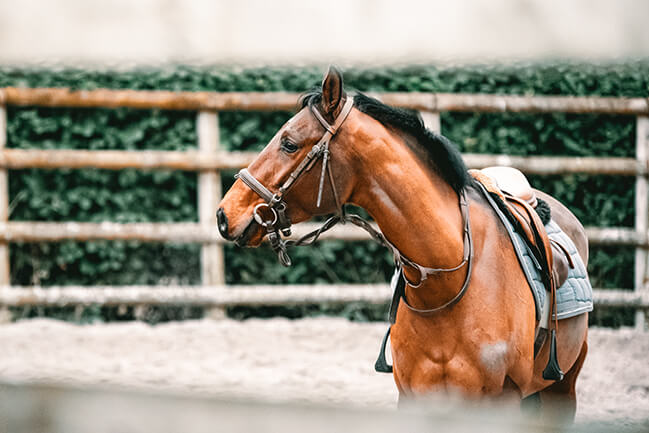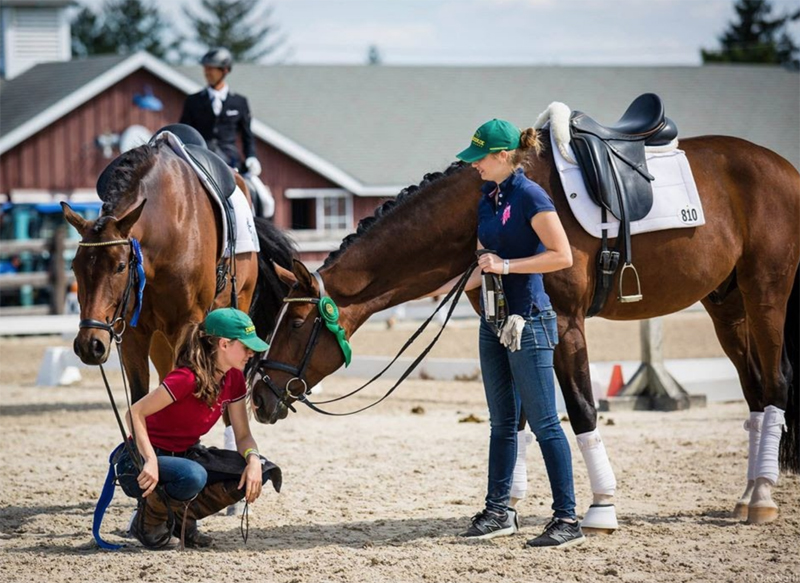Being an equestrian is a dream for many. But, how much does it cost?
The cost of being an equestrian varies widely. It depends on factors like lessons, gear, and horse care. Owning a horse or just taking riding lessons can impact the overall expense. This blog post will break down the costs involved in becoming an equestrian.
From the basics of riding lessons to the expenses of horse ownership, we will explore every aspect. Understanding these costs can help you plan and budget. Whether you are a beginner or looking to own a horse, knowing the financial commitment is essential. Let’s dive into the details of what it takes to pursue this rewarding passion.
Introduction To Equestrian Costs
Embarking on an equestrian journey is exciting. Horses are magnificent, and riding offers immense joy. Yet, understanding the costs involved is crucial. Equestrian activities come with various expenses. These range from initial investments to ongoing costs. Let’s break down these expenses to help you plan better.
Initial Considerations
Starting in equestrian sports involves significant initial costs. First, purchasing a horse is a major investment. The price of a horse varies based on breed, training, and age. Some horses can cost a few thousand dollars. Others may reach tens of thousands.
Next, consider the equipment. Essential items include a saddle, bridle, and grooming tools. Quality gear ensures safety and comfort. Costs for these can add up quickly. A good saddle alone can cost several hundred dollars.
Finally, think about training. Both you and your horse need lessons. Professional training ensures skill development. Lesson fees vary, but they are necessary for progress.
Ongoing Expenses
Owning a horse comes with regular expenses. Boarding your horse is a major cost. Some owners have their own stables. Many rely on boarding facilities. Boarding fees cover housing, feeding, and basic care. These can range from a few hundred to over a thousand dollars monthly.
Feeding a horse is another ongoing cost. Horses need a balanced diet of hay, grains, and supplements. The cost of feed depends on your horse’s size and activity level.
Healthcare is vital. Regular vet check-ups, vaccinations, and dental care are necessary. Unexpected medical issues can arise. Budgeting for healthcare helps manage these costs.
Lastly, consider farrier services. Horses need regular hoof care. Farriers trim hooves and replace horseshoes. This service is essential for your horse’s health and performance.
Purchasing A Horse
Becoming an equestrian involves a significant commitment, both in time and money. One of the first major expenses you will face is purchasing a horse. The cost of buying a horse can vary widely, depending on several factors including breed, age, training, and purpose. In this section, we will break down these costs to help you make an informed decision.
Buying Vs. Leasing
Deciding whether to buy or lease a horse is a crucial choice. Each option has its pros and cons.
- Buying a Horse: This option gives you full ownership. You can train the horse as you like. The initial cost can be high, ranging from $1,000 to $10,000 or more. Ongoing expenses include feed, veterinary care, and boarding.
- Leasing a Horse: Leasing offers flexibility. It allows you to experience horse ownership without the long-term commitment. Lease agreements can vary. Some require a monthly fee, while others cover a portion of the horse’s expenses.
Cost Of Different Breeds
The breed of the horse is a significant factor in determining its cost. Below is a table outlining the average costs for different breeds:
| Breed | Average Cost |
|---|---|
| Thoroughbred | $3,000 – $10,000 |
| Arabian | $5,000 – $20,000 |
| Quarter Horse | $2,500 – $15,000 |
| Pony | $1,000 – $5,000 |
Thoroughbreds are popular for racing and can be expensive. Arabians are known for their endurance and beauty. Quarter Horses excel in rodeo events, making them a versatile choice. Ponies are often chosen for younger riders and can be more affordable.
Boarding And Stabling
Owning a horse comes with many responsibilities. One of the biggest is finding the right boarding and stabling. This involves keeping your horse safe, healthy, and happy. But how much does it cost to board a horse? Let’s break it down.
Types Of Boarding
There are different types of boarding options. Each offers various services and amenities.
- Full Board: This is the most comprehensive option. It includes feeding, cleaning stalls, and daily care.
- Partial Board: This option includes some services. Owners might still need to provide extra care.
- Self-Care Board: This is the most basic option. Owners handle all care and feeding themselves.
Average Monthly Costs
The cost of boarding a horse can vary widely. It depends on the type of boarding and the location.
| Type of Boarding | Average Monthly Cost |
|---|---|
| Full Board | $400 – $900 |
| Partial Board | $200 – $500 |
| Self-Care Board | $100 – $300 |
These costs cover basic care. They may not include additional services like training or special feeding.
Choosing the right boarding option depends on your needs and budget. It’s important to visit different stables. Ask questions and understand what is included in the cost.
Feeding And Nutrition
Feeding and nutrition are essential parts of equestrian care. Horses need a balanced diet to stay healthy and perform well. This involves considering the cost of feed, supplements, and vitamins. Let’s break down these costs.
Cost Of Feed
The cost of feed can vary based on your horse’s needs. On average, a horse consumes about 1.5% to 2.5% of its body weight in feed daily. Hay is a primary source of nutrition. The cost of hay depends on the type and quality. High-quality hay can cost anywhere from $5 to $15 per bale. Grain and pelleted feeds are other components. They can cost between $20 to $30 per 50-pound bag.
In a month, feeding a horse can range from $100 to $300. This range depends on the feed type and your location. Always consider the nutritional needs of your horse when budgeting for feed.
Supplements And Vitamins
Supplements and vitamins can enhance a horse’s diet. They address specific health needs. Common supplements include joint support, digestive aids, and hoof care. Vitamin E, biotin, and omega-3 are popular choices. These supplements help maintain a horse’s overall well-being.
The cost of supplements varies. Basic vitamin supplements can cost around $20 per month. Specialized supplements for joint or hoof care can range from $50 to $100 per month. Keep in mind that not all horses need supplements. Consult with a vet to determine the best options for your horse.
Veterinary Care
Veterinary care is a crucial part of being an equestrian. Your horse’s health directly impacts their performance and well-being. Understanding the costs involved helps in planning and maintaining a healthy lifestyle for your horse.
Routine Checkups
Routine checkups are essential for your horse’s health. These include vaccinations, dental care, and general health assessments. Typically, a vet visit for a routine checkup may cost between $100 to $200. Vaccinations can range from $20 to $50 per shot. Dental care usually costs around $80 to $200 per visit.
Emergency Care
Emergency care costs can be higher. Unexpected injuries or illnesses require immediate attention. These emergencies can range from colic surgery to severe lameness. Emergency vet visits often start at $300 and can go up to several thousand dollars. It’s wise to have an emergency fund set aside for such situations.

Credit: mynewhorse.equusmagazine.com
Training And Lessons
Becoming an equestrian involves regular training and lessons. They help you and your horse improve skills. Learning from an experienced trainer is key. Whether you are a beginner or an advanced rider, ongoing education is essential.
Private Vs. Group Lessons
Private lessons offer one-on-one attention. The trainer focuses solely on you and your horse. This can lead to faster progress. But, private lessons often cost more.
Group lessons are more affordable. You share the trainer’s time with other riders. Group lessons can be fun and social. But, you may get less individual attention.
Trainer Fees
Trainer fees vary. They depend on the trainer’s experience and location. Experienced trainers usually charge more. In cities, fees are often higher.
Some trainers charge per lesson. Others offer packages. Packages can save money in the long run. Always ask about the trainer’s qualifications. Make sure they match your needs.
Equipment And Tack
Equipping yourself and your horse is an important part of being an equestrian. The right equipment and tack ensure safety and comfort. Let’s break down what you need and the costs involved.
Essential Gear
Every equestrian needs basic gear. This includes a helmet, riding boots, and gloves. A good helmet costs around $50 to $300. Riding boots range from $100 to $500. Gloves are typically $20 to $50. For your horse, you’ll need a saddle, bridle, and saddle pad. A decent saddle can cost $500 to $2,000. Bridles are about $50 to $200. Saddle pads usually cost between $20 and $100.
Maintenance And Replacement
Maintaining your equipment is crucial. Regular cleaning and conditioning extend its lifespan. Saddles and bridles need frequent care. Use saddle soap and leather conditioner. This can cost $10 to $30 per month. Over time, gear will wear out. Plan to replace items every few years. Helmets should be replaced after any fall. Riding boots may last several years with proper care. Saddles, if well maintained, can last a decade or more.

Credit: www.airtasker.com
Competition And Travel
Competing in equestrian events can be an exciting experience. Yet, it comes with costs. These costs can add up quickly. Two main expenses are entry fees and travel expenses. Let’s break these down to understand better.
Entry Fees
Entry fees vary by event and level of competition. Local shows may charge $20 to $50 per class. Bigger events can charge $100 or more per class. Here’s a quick breakdown:
| Event Type | Cost Per Class |
|---|---|
| Local Show | $20 – $50 |
| Regional Event | $50 – $100 |
| National Competition | $100+ |
Some shows also have additional fees. These can include stall fees, office fees, and other charges. Always check the event details for a complete list of fees.
Travel Expenses
Travel is another significant cost. Competing often means traveling to different locations. Travel expenses include:
- Fuel costs
- Accommodation
- Food
- Horse transport
Fuel costs depend on the distance to the event. Short trips may cost $50 to $100. Longer trips can cost much more. Accommodation can vary too. Staying at a budget hotel may cost $50 per night. A nicer hotel can cost over $100 per night.
Horse transport is another big expense. Transporting your horse can cost $1 per mile or more. Always plan for these costs when budgeting for competitions.
Insurance And Liability
Being an equestrian can be both thrilling and fulfilling. But, it also comes with responsibilities. One key aspect is understanding the importance of insurance and liability. This ensures you are protected from unexpected costs and legal issues.
Types Of Coverage
There are several types of insurance coverage for equestrians. Personal liability insurance covers injuries or damage caused by your horse. It’s crucial for all horse owners. Horse mortality insurance covers the value of your horse in case of death. Major medical insurance helps with veterinary bills. This can save you a lot of money. You can also get loss of use insurance. This helps if your horse can’t perform due to injury or illness.
Average Premiums
Average premiums for equestrian insurance vary. Personal liability insurance usually costs between $150 to $300 per year. Horse mortality insurance premiums depend on your horse’s value. It often costs 2.5% to 5% of the horse’s value annually. Major medical insurance premiums can range from $200 to $600 per year. Loss of use insurance is more expensive. It usually costs 3% to 5% of the horse’s insured value. Understanding these costs helps you budget better.

Credit: www.youtube.com
Additional Costs
Being an equestrian involves more than just the initial costs of buying a horse. There are many additional costs that can add up quickly. To help you plan, here are some of the extra expenses you should expect.
Clothing And Apparel
Equestrian clothing is essential for safety and comfort. Here are some items you will need:
- Riding Helmet: $50 – $300
- Riding Boots: $100 – $400
- Riding Breeches: $30 – $200
- Gloves: $20 – $50
- Jackets and Vests: $50 – $200
These prices can vary based on brand and quality. Investing in good-quality gear can save money in the long run.
Miscellaneous Expenses
Beyond clothing, there are many other miscellaneous expenses that come with being an equestrian. Here are some examples:
- Riding Lessons: $30 – $100 per lesson
- Show Fees: $100 – $500 per show
- Transportation: $50 – $200 per trip
- Vet Visits: $100 – $300 per visit
- Farrier Services: $50 – $150 every 6-8 weeks
These costs can vary depending on your location and the level of care your horse needs.
Saving Money
Being an equestrian can be expensive. But there are ways to save. Smart planning can help you cut costs without sacrificing quality. This section covers useful tips and strategies. You can save money while enjoying your passion for horses.
Budgeting Tips
Creating a budget is the first step to saving money. Track your expenses and set limits. Here are some budgeting tips:
- Make a list of all your regular equestrian expenses.
- Set aside a specific amount each month for these expenses.
- Use a spreadsheet or app to keep track of spending.
- Review your budget regularly and adjust as needed.
Cost-cutting Strategies
There are many ways to cut costs without compromising on quality. Consider these strategies:
- Buy used equipment: Look for second-hand gear. It is often just as good as new.
- Share resources: Share equipment with other equestrians. This can save you both money.
- Do your own grooming: Learn basic grooming skills. This can reduce the need for professional services.
- Shop during sales: Look for discounts and sales. Stock up on essentials when prices are low.
- Join a co-op: Some equestrian centers offer co-op programs. These can provide access to shared resources at a lower cost.
Frequently Asked Questions
How Much Do Riding Lessons Cost?
Riding lessons typically cost between $40 and $100 per hour. Prices vary based on location, instructor experience, and lesson type.
What Is The Cost Of Owning A Horse?
Owning a horse can cost between $3,000 and $10,000 annually. This includes feed, boarding, veterinary care, and other essentials.
How Much Are Equestrian Competitions?
Entry fees for equestrian competitions range from $50 to $500 per event. Additional costs include travel, lodging, and equipment.
What Are The Costs Of Horse Tack?
Horse tack can cost between $500 and $3,000. This includes saddles, bridles, and other necessary equipment.
Conclusion
Being an equestrian involves various costs. From lessons to equipment, expenses add up. Careful budgeting can help manage these costs. Investing in quality gear saves money in the long run. Equestrian activities offer joy and skill development. Many find the experience rewarding despite the expenses.
Always consider all factors before diving in. Balance passion with financial planning for a fulfilling equestrian journey.



